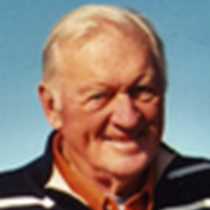Palouse River
Morning river travelers aboard the Sea Lion emerged from their cabins into brisk air, clear blue sky and glass-like waters at the Palouse River mouth. Zodiacs were launched, several of them cradling kayaks. Two destinations were on the agenda: first, kayak adventures near the river mouth, with occasional Naturalist comments accompanying the paddlers; and second, trips aboard a bright yellow school bus uphill to Palouse Falls and an overview of the fabled Channeled Scablands.
Probing kayaks revealed bird populations, sturdy grasses, overhanging basalt walls, land mammals, and the occasional water disturbance from beneath the surface. Kayak strokes and the rising sun’s rays caused several guests to shed a layer of clothing. The surrounding brown hills (green for most of the year) sheltered participants as they coasted by the shoreline.
Guests visiting Palouse Falls trundled uphill above the Palouse and Snake rivers where they gazed across the Scablands, so named by geologist J Harlan Bretz. For decades Bretz’s theory of Great Floods thundering across the Columbia Plain was beyond the imaginations of fellow geologists. When the Pleistocene Ice Age Lake Missoula was identified – an ancient inland sea that once lay across portions of today’s Montana, northern Idaho, eastern Washington and perhaps parts of Canada – and “tidal” marks were noted on hillsides near Missoula, Montana, the Bretz theory was confirmed. Guests looked at the 200-foot falls and its blue plunge pool and hiked over nearby ridges to see upstream Palouse River cascades.
Passing through the locks of Monumental Dam – named by Lewis & Clark for a nearby singular basalt outcropping – the lower Palouse hills rose in the distance. Guests absorbed this spectacular scenery while enjoying a top deck barbecue. After lunch the Naturalist hosted a power point presentation on scientific aspects of the Lewis & Clark expedition.
The downhill path to the Snake River’s last dam (Ice Harbor) lay ahead followed closely by one of the Inland Empire’s famous crossroads: the confluence of the Snake and Columbia rivers.
Morning river travelers aboard the Sea Lion emerged from their cabins into brisk air, clear blue sky and glass-like waters at the Palouse River mouth. Zodiacs were launched, several of them cradling kayaks. Two destinations were on the agenda: first, kayak adventures near the river mouth, with occasional Naturalist comments accompanying the paddlers; and second, trips aboard a bright yellow school bus uphill to Palouse Falls and an overview of the fabled Channeled Scablands.
Probing kayaks revealed bird populations, sturdy grasses, overhanging basalt walls, land mammals, and the occasional water disturbance from beneath the surface. Kayak strokes and the rising sun’s rays caused several guests to shed a layer of clothing. The surrounding brown hills (green for most of the year) sheltered participants as they coasted by the shoreline.
Guests visiting Palouse Falls trundled uphill above the Palouse and Snake rivers where they gazed across the Scablands, so named by geologist J Harlan Bretz. For decades Bretz’s theory of Great Floods thundering across the Columbia Plain was beyond the imaginations of fellow geologists. When the Pleistocene Ice Age Lake Missoula was identified – an ancient inland sea that once lay across portions of today’s Montana, northern Idaho, eastern Washington and perhaps parts of Canada – and “tidal” marks were noted on hillsides near Missoula, Montana, the Bretz theory was confirmed. Guests looked at the 200-foot falls and its blue plunge pool and hiked over nearby ridges to see upstream Palouse River cascades.
Passing through the locks of Monumental Dam – named by Lewis & Clark for a nearby singular basalt outcropping – the lower Palouse hills rose in the distance. Guests absorbed this spectacular scenery while enjoying a top deck barbecue. After lunch the Naturalist hosted a power point presentation on scientific aspects of the Lewis & Clark expedition.
The downhill path to the Snake River’s last dam (Ice Harbor) lay ahead followed closely by one of the Inland Empire’s famous crossroads: the confluence of the Snake and Columbia rivers.




